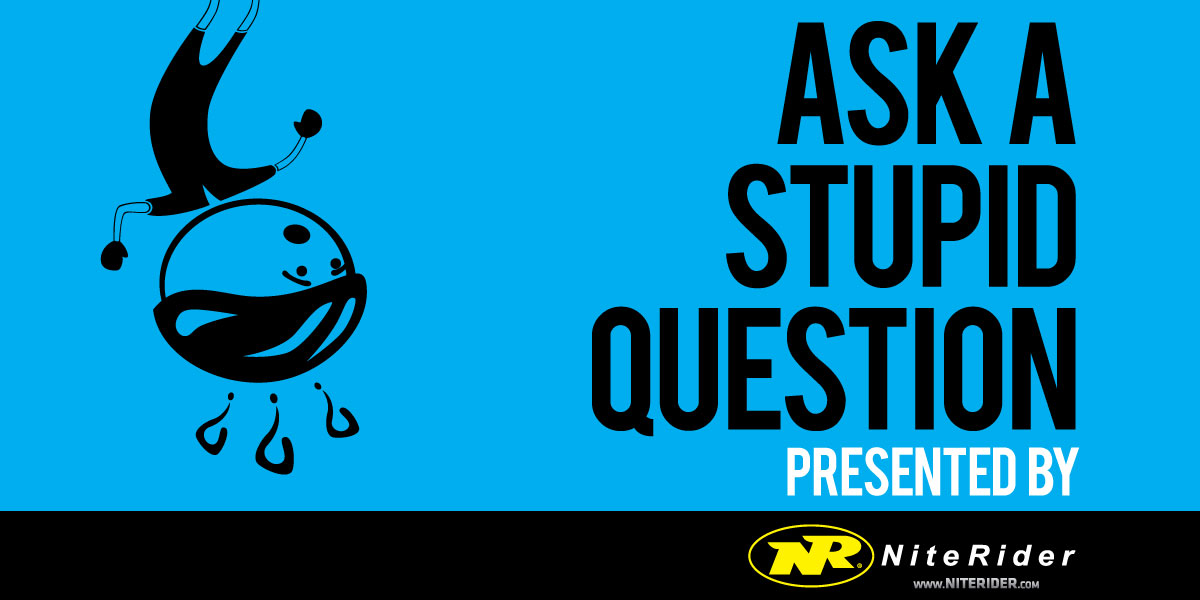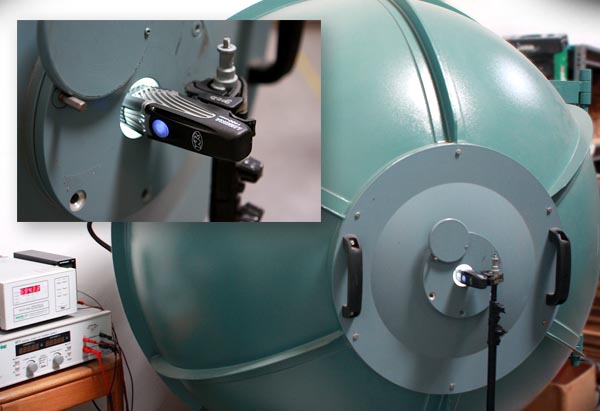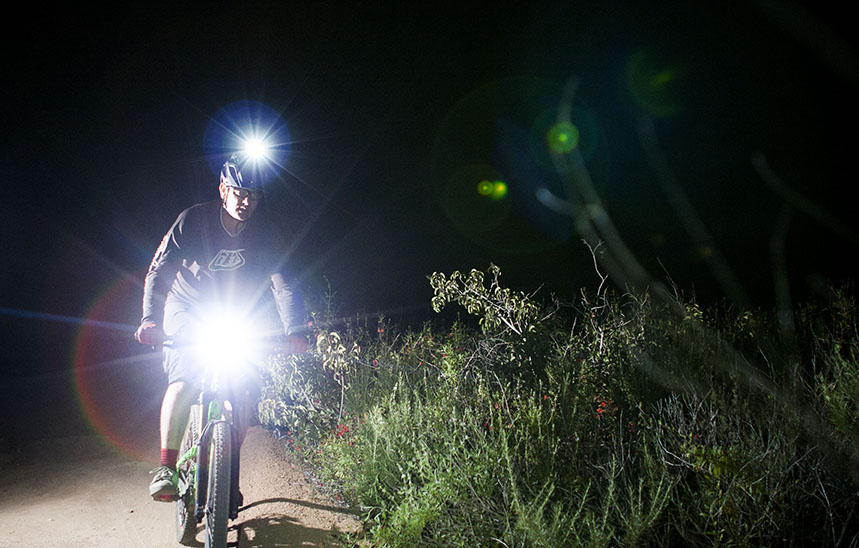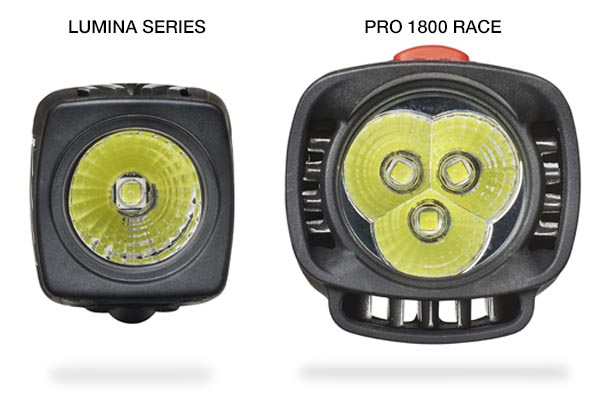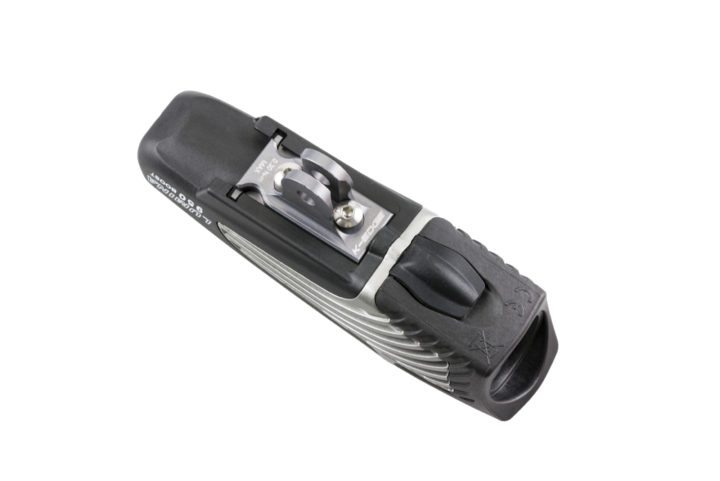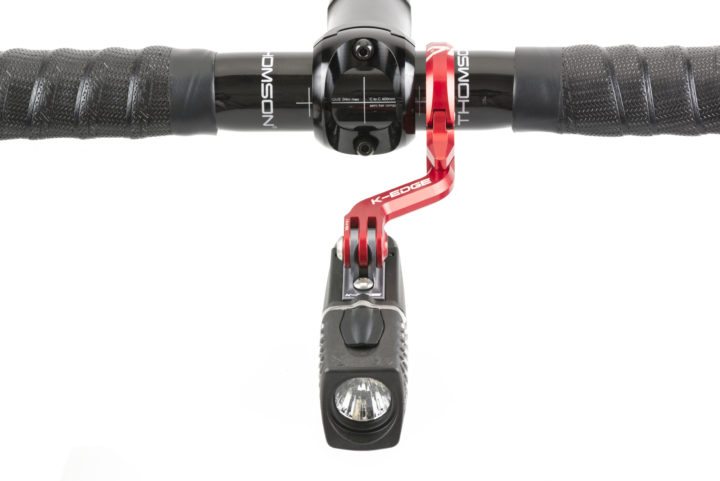We know, there’s no such thing as a stupid question. But there are some questions you might not want to ask your local shop or riding buddies. AASQ is our weekly series where we get to the bottom of your questions – serious or otherwise. Hit the link at the bottom of the post to submit your own question!
We’re back with another installment from Niterider. Winter might be winding down in some of the northern hemisphere, but there’s always room for lights. Whether that’s for commuting, late night mountain bike rides, or just daylight visibility, lights are important and we’re hoping to clear up a few more of your questions from Niterider.
Why do you measure in Lumens as opposed to Lux? – Jeff
Niterider: In 2011, the US Federal Trade Commission made it a requirement to measure LEDs in lumens. Being that it is more of a measurement that indicates the amount of light brightness emitted. Lumens are the total power of luminous flux, lux is the power of emitted Luminous Flux- A flux of 1000 lumens, concentrated in 1 square meter = 1000 lux, but a 1000 lumen spread from over 10 square meters = 100 Lux.
I wanted to get back to riding in the dark but don’t know how many lumens are enough on the trail. My only reference is your lights from the mid 90’s. How many lumens were those? – John
Niterider: Our incandescent bulbs are 12w 250 lumens / 20w 400 lumens which equals 650 Lumens on Full. For cruising trails at night, at the very least, NiteRider recommends using a helmet mounted light that outputs a minimum of 750 lumens. If you’re moving at a higher rate of speed you might experience out running your light. If this is your type of riding style, NiteRider Pro Series Lighting Systems offer up to 3600 lumens! Most trail riders prefer using both handlebar and helmet mounting applications. Helmet mounting your light will allow you to see further through your turn, lighting up where you look.
How many lumens should a rear have for daytime use and what kind of blinking pattern is best for daytime visibility? – John
Niterider: The brighter the better when it comes to daytime visibility. Any varying flash pattern is good for increased visibility. NiteRider Daylight Visible Tail Lights are equipped with two varying flash mode patterns. The “best” flash pattern will vary based on your surrounding environment. In high / busy traffic areas the fast flash is recommended. The strobe sequence, surge and peak output, follow by a break, repeat – will help increase visibility of a cyclist in traffic. Choose the best pattern that will differentiate you from surrounding vehicles. For evening tail light applications, steady or the pulse (fade in/out) flash mode is recommended to keep the driver from fixating.
Why are blinky lights vilified? Specifically, front white lights placed on the blink mode. There seems to be a lot of hate about that. – Peter
Niterider: Often times, cyclists tend to install their front blinking lights pointing directly at oncoming traffic. NiteRider does not recommend that because it may disorient and/or annoy oncoming traffic. This may be avoided with a proper head light install angle.
For a proper head light angle installation, experiment. Mount your lights and stand back, putting yourself in the same position as a motorist / pedestrian / other cyclists and see what your lights look like.
Angles will change when you go from daytime riding to night. It comes down to wanting to be visible, being able to see where you’re going, while taking into consideration your light beam angle to oncoming traffic.
How does the beam of a pro or enduro series light compare to a Lumina? In other words is it wider angle, made to cover more of the ground right in front of you with more light or anything else that sets them apart in how the light is cast? – Jeff
Niterider: The Pro systems offer a wider beam pattern at 13 degrees and the Luminas at 12 degrees. On top of that, the 1800 and 3600 Pro systems feature Triple Reflectors (see picture for comparison). One Triple Reflector for the Pro 1800 Race and a Dual- Triple Reflector for the Pro 3600 Enduro.
How does the Boost Setting work? – Tim
Niterider: Boost is a way of squeezing out the maximum light output when total lumens are more important than run time. Since it’s reserved for special occasions, there is a dedicated way to access the setting so you don’t have to cycle through it when it isn’t needed. Double tapping the power button from any mode will “Boost” the lamp to maximum/full power. To return to your previous mode (this includes flash modes as well), simply tap the power button once. If the lamp is turned on, going straight into “Boost” from being “Off”; The lamp by default will return to the “Low” setting with a single tap of the power button.
What can I do to make my handlebar strap mount not slip? Have you ever considered other mounts? Any chance you would ever design a linking system between lights (Bluetooth or something) that dims/brightens both bar and helmet lights when you push just one light’s button? – Seth
Niterider: We’re actually currently working on revising the Lumina Handlebar mount. K-Edge also manufactures different mounts as well for the Lumina Series like their Niterider to GoPro mount which allows you to mount the light to, well, any GoPro mount. The top cap mount you mentioned is currently available from third party manufacturers in forms like the Paul Stem Cap Light Mount which allows you to use the standard strap, or in versions like the K-Edge Go Big GoPro mount which would then be used with the Niterider to GoPro mount mentioned above. No development for Bluetooth pairing at this time.
What causes tail lights to eject from their mounts? Is there anything that can be done to prevent that from happening?
Niterider: In most situations the ejection occurs when the light is not properly secured to the mount. When properly secured there are very few issues. With that said, if you’re ever having problems with a Niterider product, give our customer service department a ring, and we’ll make it right. – NiteRider Customer Support, Mon-Fri, 8am-4:30pm PST Tel: 1.800.466.8366, Intl: +1.858.268.9316
Is there any industry standard test for battery performance in cold weather? – Paul
Niterider: The chemistry of a battery determines its performance in cold weather, but all batteries are less effective the colder they get. Manufacturers test their batteries for performance in all conditions. This information can be obtained in a data sheet provided by the battery manufacturer.
Does Niterider offer a recycling program for old light batteries and parts?
Niterider: We do not have a recycling program in-house. We suggest visiting your local E-Waste Recycling Facility to dispose of your old/used electronics properly.
Got a question of your own? Click here to use the AASQ form, or find the link under the Contact menu header up top anytime a question pops into your mind!
